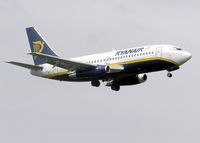 Travel insurance has been around for decades, but the industry has grown rapidly since the terrorist attacks in 2001, reaching sales of more than $1 billion. Before 9/11, only about 10 percent of Americans taking cruises, tours or international trips bought travel insurance. Today that number is around 30 percent, according to the U.S. Travel Insurance Association. About 80 percent of those policies are "per trip" policies that cover the three most common sources of trouble: canceled or postponed trips, medical emergencies, and lost or damaged baggage.
Travel insurance has been around for decades, but the industry has grown rapidly since the terrorist attacks in 2001, reaching sales of more than $1 billion. Before 9/11, only about 10 percent of Americans taking cruises, tours or international trips bought travel insurance. Today that number is around 30 percent, according to the U.S. Travel Insurance Association. About 80 percent of those policies are "per trip" policies that cover the three most common sources of trouble: canceled or postponed trips, medical emergencies, and lost or damaged baggage. What is covered?
Some policies may exclude terrorism or "acts of God" altogether; others offer broader coverage. For hurricanes, your policy may apply only if you purchased it before the storm was named and then only if your destination is under a mandatory evacuation order.
Cost
A travel insurance policy can add anywhere from 4 to 8 percent to the cost of your trip, depending on your age and how much coverage you want. Web sites such as www.insuremytrip.com can help you compare policies and prices. For example: a coverage for a $3,600 Alaskan cruise came up to $280. Without the insurance, getting sick would have meant deciding between staying home and losing the money or going and being miserable.
Is it worth it?
Travel insurance often makes sense on very expensive trips or on trips that require large, non-refundable deposits or advance payments for hotel stays or special-event tickets. Cruises can fall into this category because most of the cost is paid upfront and canceling even 30 days in advance could mean no refund. But there are also instances where insurance does not make sense for example, if your trip doesn't include high prepaid expenses or if your prepaids,such as airline tickets, are changeable for a small fee. If you rarely get sick, cancellation coverage may not be worth the added expense. Most trips go off smoothly or with minor hassles that tend to affect your mood more than your pocketbook.
Credit Card Coverage
Some credit card companies provide certain travel assistance when you pay for your trip expenses using their card. While helpful, these extras are typically not as comprehensive as travel insurance. If your credit card company already provides certain coverage, you may be able to save some money by buying a policy to fill in the gaps.
Sources
If you book your trip through a travel agent or cruise line, you likely will have the option to add travel insurance at the time of purchase. In some cases, insurance may be included in your package. For example, Elderhostel includes certain kinds of coverage, including emergency medical evacuations, in each trip at no additional cost. You can also buy policies from a number of companies such as Access America or Travel Guard.
Medical care
Medicare will not cover health care expenses outside the United States. Likewise, some private health plans limit coverage for those traveling outside the plan's network. Travel insurance can bridge this gap but you should check with your plan provider to make sure your're not paying twice for the same thing. Also,some travel policies may exclude pre-existing medical conditions unless you obtain a waiver or purchase the policy for in advance. If you have recently has heart attack or have diabetes, for example, cjeck with the provider to make sure your're covered.
Medical evacuation
Travel Insurance can pay for evacuation to your home of to the nearest suitable medical facility, important if you become injured in out-of-the-way places. Such evacuations can run into tens of thousands of dollars.
The odds
According to a recent survey, 17 percent of pleople who buy travel insurance actually wind up filing a claim. That's fairly high compared with other types of insurance,considering that one of the fundamental tenets of insurance is that most people won't use it-if they did, policies would be unaffordable. For some, however, travel insurance can turn out to be a wise investment. A young couple were traveling to Australia from Washington D.C,via Charlotte and Los Angeles. Because it was a trip with many connecting flights, the opted to pay $269 for insurance. Their policy cobered trip cancellation up to $9,000 (the amount of their prepaids), medical expanses up tp $10,000 per a person and medical transportation up to $20,000 per a person; it also had an assortment of coverages for delays or lost baggage. The trip got off to a shaky start. The couple became stranded in Charlotte when thei flight to Los Angeles was canceled due to heavy smoke from California forest fires. Their travel insurance paid for a hotel in Charlotte, meals during their delay and cab fare to and from the airport. It also reimbursed them for a prepaid hotel room in Sydney they were unable to use because of their late arrival. They eventually got another flight, but one of thei bags didn't make it, and the insurance paid to replace Jodie's formal dress for their night out at the opera. The travel insurance helped them to smooth out the rough spots and still have a great trip.
Source: (AARP Bulletin,October 2006)
Author: (Joe Hearn)
More about Travel Insurance

